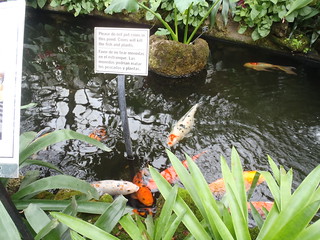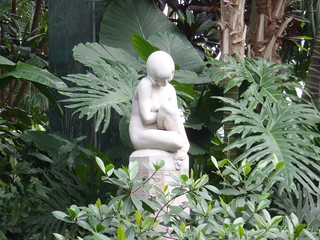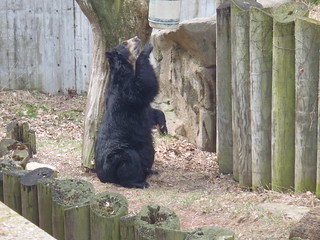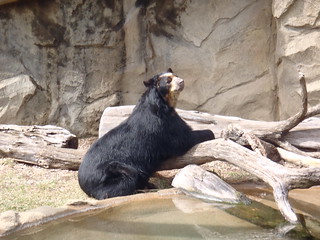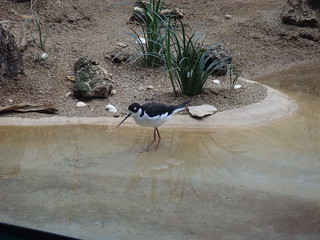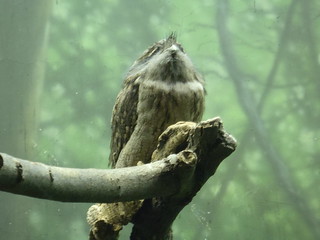Composition, details, colors, etc. — all amazing.
Monthly Archives: March 2011
Book review: Generation Me: Why Today’s Young Americans Are More Confident, Assertive, Entitled—and More Miserable Than Ever Before
Generation Me: Why Today’s Young Americans Are More Confident, Assertive, Entitled — and More Miserable Than Ever Before by Jean M. Twenge, Ph.D. Simon and Schuster Free Press. New York: 2007. 304 pages.
Jean Twenge’s mouthful of a subtitle says it all — after taking a look at her generation and its issues, she finds reams of data to support her assumptions. According to Twenge, “. . . this generation has never known a world that puts duty before self.” This is an astonishing statement given the number of young Americans who have found their way to Iraq and Afghanistan or whose origins lie in cultures where duty remains an accepted obligation, as well as the response to the 9/11/2001 attack on the United States and the natural disasters of the past couple of decades. What Twenge dubs “Generation Me” (“GenMe”) seems to have responded to these crises nearly as enthusiastically and generously as their parents and grandparents.
Perhaps every generation likes to think life is tough compared to that of its predecessors. The Silent Generation endured the Great Depression, World War II, and the Korean conflict, while the Baby Boomers lived through the Cold War, assassinations, Vietnam, and Nixon (not to mention the horrors of disco and leisure suits). According to Twenge, GenMe is plagued by the high self-esteem uncorrelated to merit inflicted on them by their elders combined with the concomitant high expectations and the harsh realities of a world in which good jobs are scarce and higher education, housing, and child care costs are high. GenMe, says Twenge, has been taught to think it can do and have anything, but is discovering that getting into and attending college is competitive and expensive; that a typical career path begins with an unsatisfying, low-paying job; and that achieving the lifestyle their parents have — the suburban home with two-car garage and two cars — takes time and lies at some indefinable point in the future.
Twenge and her associates have pored through countless surveys to see how this generation’s expectations, attitudes, and mores compare to those of its predecessors. Because most of these data are from the Baby Boomers, the “Than Ever Before” of the subtitle is debatable. If we had data for each generation of Americans from the entire history of our nation, we might be surprised by how attitudes have not only evolved, but sometimes reverted to a previous state. We tend to stereotype eras, too. When you mention the 1950s, most people envision the nuclear family, Leave It to Beaver, and innocent pleasures such as the Hula Hoop and roller skating. In reality, sex was hot (think Marilyn Monroe and From Here to Eternity); censorship was losing its influence to the changing mores of the masses, especially those of the young; and sexy, antiestablishment rebels like Marlon Brando and James Dean were redefining antiauthoritarianism as “cool.” Note that Monroe, Brando, and Dean would belong to what Twenge calls “Generation Prude” (with GenMe in the role of “Generation Crude”).
Twenge peppers her selected statistics with a generous number of illustrative quotations and anecdotes. While these are entertaining, they’re also meaningless; anyone could find quotations and anecdotes that support a contradictory point of view. Indeed, Twenge contradicts herself on occasion. After asserting that GenMe is more tolerant of gays, she mentions a teenage boy who is afraid of what his classmates would do to him if they knew of his orientation. That doesn’t sound “more tolerant” to me.
Undoubtedly Twenge cherry picks the data, and there’s no way for a reader to know how valid the studies and surveys are. She also doesn’t take into account regional and socioeconomic factors. My guess is that, for example, students from the School of the Art Institute of Chicago, living and studying in an urban, multicultural setting, are more tolerant than either the parents or teens of the Itawamba County school district in northern Mississippi, now infamous for their treatment of a lesbian classmate who wanted to bring her girlfriend to the prom. Like other generations, GenMe isn’t a uniform mass.
The world and the workplace don’t operate optimally for GenMe, so Twenge devotes “Applying Our Knowledge” to her solutions. For example, under “For Employers,” she says, “. . . realize that younger employees may have a very different outlook in life . . . the times that shaped GenMe’ers as children are very different from those experienced by older generations.” Surely she knows that for millennia each generation or two has had a different outlook and that the solution isn’t for the older to adapt to the younger, but for society to evolve as views and values blend and evolve, then change.
At this point, Twenge becomes a self-parody. While deploring the self-centeredness she has tried to document, she exemplifies it by suggesting solutions that require catering to the expectations of GenMe. There is no meeting halfway. Because GenMe doesn’t accept authority automatically (does youth ever?), it’s up to you to earn their respect. And they expect praise, so Twenge says, so you’d better be prepared to deliver it. Note what’s missing — what GenMe, whose members take great pride in their critical thinking skills, can expect and how they can adapt to meet their employers halfway. It’s our way or the highway, it seems.
I’ve seen some of the attitudes and behaviors Twenge outlines and been among the first to shake my head over them. On the whole, however, when GenMe enters the sphere of work, relationships, and family, they do what everyone does — they grow up. They alter what they can, for example, life/work balance, and adapt to what they can’t. In every generation, youthful idealism succumbs to adult pragmatism. In the end, Twenge makes only the case that GenMe is different from the Baby Boomers, who were different from their parents. That they are different, and the ways in which they are different, is hardly a revelation, and that they are “more miserable than ever before” remains to be proven. Twenge’s information and her interpretations are interesting, and some of her concerns may be valid, but don’t be surprised if in 20 years someone is writing about how “prudish,” uptight, and intolerant GenMe is.
22 March 2011
Copyright © Diane L. Schirf
Springtime at Lincoln Park Zoo
Starting next week, my life will take another turn, so on Monday the 21st I met JT at the Lincoln Park Conservatory for Mission: Eurasian Lynx, Lincoln Park Zoo’s latest feline addition. First, however, we roamed the conservatory, focusing on the “Cretaceous Chorus” wafting among the ferns.
At the zoo, the black rhino seemed unimpressed by the yard improvements, while the polar bear was nowhere to be seen in its outdoor exhibit. At Regenstein African Journey, the African dwarf crocodile peered over a crowd of fish that obscured her submerged body. We had better luck outdoors, where we found an Andean bear swatting a suspended container, then foraging underneath it. Finally, he came to rest in a picture-perfect model’s pose by the exhibit’s pool. Further south, the spring sunshine shone on the African wild dogs’ beautiful coats.
At the McCormick Bird House, we watched as the male fairy bluebird preened himself, the shorebirds foraged in the water, the tawny frogmouth perched (and probably slept), the Inca terns checked us out, and the kookaburras perched (but didn’t sleep).
Nearby at Regenstein Birds of Prey, one of the cinereous vultures carried large twigs around somewhat officiously. The real attention getters, though, were they European white storks, whose neck-dipping, bill-clattering displays drew in even casual passers-by. Time will tell if the storks deliver baby storks.
We headed to the Kovler Penguin-Seabird House, where a molting rockhopper dueled with a sleeker neighbor. On the seabird side, a murre flapped its wings at the glass, startling a little girl who ran screaming to Mommy. Thus begins a lifelong terror of birds.
Across the way at the Kovler Lion House, Adelor the male African lion deftly maneuvered the female into a corner, where she lay down for a catnap. He paced, rubbing the left side of his face obsessively on the wires. JT said his left eye appeared to be bothering him, but I couldn’t see any inflammation or drainage. On one pass, though, I spotted the trouble. He has a well-developed cataract and is probably trying to clear his clouded vision. I remember Adelor’s arrival at the zoo when he was just a scruffy youngster, but that was many years ago, and his age is showing.
We’d been hoping the Eurasian lynx would be outdoors, but they were lazing around inside. One sister was nearly invisible on top of the rock wall, while the other’s front half was visible as she lay behind rocks on the opposite side. Mission: Eurasian Lynx was only partly successful. We saw them, but not in the best light.
We headed straight for the white-cheeked gibbon exhibit at the Brach Primate House, where a crowd had gathered. Male Caruso sat center and center as is his wont, but this time female Burma was out of hiding with her infant, born in January. She pawed at it, carried it to the wall, and returned to her original spot. The infant alternated between clinging and nursing and letting go somewhat adventurously, which may explain the pawing. When it held out its arms, we got a good look at its curved hands and long fingers — it’s truly built for a life in the trees.
At some point, the usually placid Caruso slammed into the glass, displayed an impressive set of teeth (including prominent canines), and began urinating on the glass. Highly agitated, he grabbed a vine and swung, spraying a steady stream of urine in an arc on the glass. He displayed at least twice more, minus the urine marking. He was reacting to a particular young women, who, when she realized she was the cause, sensibly stood back. Dressed in black, she was about the same height as the elevated Caruso, and her hair was streaked dark brown and blond. I heard her say that he must think she’s from a different monkey tribe. Aside from the “monkey” bit, she could be right; he may have perceived her as another primate with strangely striped head markings. All I can say is, “My, Caruso, what large, healthy teeth you have.”
By now the lakefront temperatures had dipped significantly, so, after checking out the impressive rack on the reclining Père David’s deer, we went to R. J. Grunt’s, where I recommend the raspberry shake with low-fat yogurt. Mmmm.
Book review: Pagan’s Crusade
Pagan’s Crusade by Catherine Jinks. New York: Collins. 2004. 272 pages.
I learned about Pagan’s Crusade on a medieval history list, where a poster recommended it for young adults. Pagan, a 16-year-old product of war rape who arises from the grimy underbelly of 1187 Jerusalem, finds himself desperate to join the Knights Templar for both the money and protection from the lowlifes to whom he’s indebted. Life as a Templar squire won’t be easy, he’s told. “Lord Roland’s last squire was disemboweled by the Infidel and his guts were tied across the road to the fortress,” to which Pagan mentally responds, “Hip hip hooray.”
It’s Pagan’s irreverent commentary and metaphors that may hook the young adult reader. In Pagan’s world, those who aren’t rotting from disease and poverty are rotting from corruption and cynicism, with one remarkable exception — the man to whom he’s hired himself as squire.
Like many teenagers, Pagan nicknames individuals based on their appearance, so for example the sergeant who interviews him becomes “Rockhead” (“face like a fort, eyes like arrowheads”). When Pagan learns that his Knight Templar, Lord Roland Roucy de Bram, is a paragon of looks, strength, and virtue, he dubs him “Saint George” (“like something off a stained glass window”). If Pagan can’t stand Rockhead, he’s not too sure about Saint George, either, as they set about protecting pilgrims and then defending Jerusalem itself.
Pagan sounds like the teenager he is, but his voice is that of an alienated loner who’s come of age in the era of video games, not the twelfth century. Young adults may relate to his running, clipped commentary on everyone and everything, but I found it to be tiresome, especially as it is not leavened by a sound, suspenseful plot or even historical context. The anticlimactic, predictable denouement didn’t leave this older adult reader wanting more of this series about the “misadventures of a squire in peril,” a young man surrounded by war, violence, starvation, disease, and death who whines, “Lentils again. Terrific.”
19 March 2011
Copyright © Diane L. Schirf
Book review: The Road to Monticello: The Life and Mind of Thomas Jefferson
The Road to Monticello: The Life and Mind of Thomas Jefferson by Kevin J. Hayes. New York: Oxford University Press. 2008. 752 pages.
While I was visiting my aunt in Washington, D.C., in the early 1990s, she suggested a road trip: first, to Luray Caverns, then down Skyline Drive to a town where we’d stay overnight, then over to Charlottesville for the triple play of Monticello, Michie Tavern (lunch), and Ash Lawn. Off we went, stopping in Charlottesville first at the Thomas Jefferson Visitor Center. It was at the center that I first started falling in love with founding father and American sphinx Thomas Jefferson. Here and at Monticello, Jefferson’s inventive mind and hands-on applications are revealed in a variety of ways, including the oddities he imagined and the nails he made.
In The Road to Monticello, Kevin J. Hayes explores that Enlightenment mind set through the books Jefferson read, acquired, and cherished and through his writings, from personal letters to his major works, from his “Head and Heart” letter to Maria Cosway to the Declaration of Independence, Notes on the State of Virginia, and the Statute of Virginia for Religious Freedom. The biography is more or less chronological, from his early life under the tutelage of George Wythe, during which he developed his interests in law and languages, to his design for his epitaph and his death on July 4, 1826 — followed five and one-half hours later by that of friend and foe John Adams.
Hayes covers Jefferson’s many advanced interests and everything that can be known or conjectured about his library, his passion for books as objects, his political and religious beliefs, his travels, his family and friends, and the influences and experiences that informed his views and convictions. By the end, Hayes seems to have created that which he set out to: a comprehensive portrayal of Jefferson’s life and mind gleaned from his books and intellectual pursuits.
Hayes falls short in two areas, one of which he concedes at the beginning. Like Adams and Benjamin Franklin, Jefferson was keenly aware that he would become a historical figure and that future Americans would pore over his words and life story. Adams and Franklin wrote their letters and messages accordingly, knowing that they would become part of posterity. Adams in particular seems to have held little back; both wanted to be understood. In contrast, Jefferson worked to efface his personal life and feelings from the record. The “Head and Heart” dialogue, and the form in which it’s written, reveal Jefferson’s discomfort with emotions as well as his apparently inability to express them directly. Perhaps he found this frustrating; “Head” poses a hyperbolic argument against forming attachments, but “Heart,” according to Hayes, gets in the last word and “rejects the pleasures of solitude and upholds the value of friendship.”
The second problem is Hayes’ lack of objectivity and the skewed picture that results. While he lavishes attention on such details as the backgrounds of the booksellers from whom Jefferson acquired his books, he mentions little that is controversial or negative about Jefferson. He glosses over his attitude toward his slaves and his refusal to free them, his relationship with Sally Hemings, his proclivity for overspending, and the financial straits in which he left his family. The uninformed reader won’t learn from Hayes about the unapologetic Jefferson’s secret collaboration with Benjamin Franklin Bache to smear John Adams’ character or how deep was the bitterness that grew between the two men. If I hadn’t known better, I’d have thought they merely disagreed on some key issues, become estranged over them, and reconciled late in life. Jefferson’s duplicity and manipulations are as protected from public view as he would have wished them to be.
The Road to Monticello is a solid if lopsided biography that delivers part of its promise, a glimpse into the life and mind of Thomas Jefferson, but only in idealizing soft focus. His heart and soul are missing, and so are the negative traits that round out his character and make him more than just an Enlightenment thinker; they make him a human being as flawed as the rest of the species. You can’t go wrong reading The Road to Monticello; knowledge of the breadth and depth of Jefferson’s readings and interests alone will expand your mind and thought process. But you would do yourself — and, dare I say it, Jefferson — a real disservice if you stopped here and didn’t dig deeper to explore the darker aspects of his enigmatic nature. For all its length and the research behind it, The Road to Monticello is just a detailed sketch. Supplement it with a full portrait, shade and shadows included.
11 March 2011
Copyright © Diane L. Schirf







